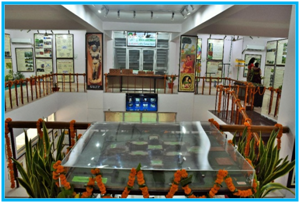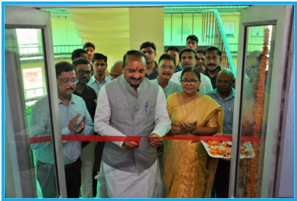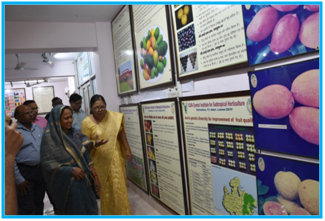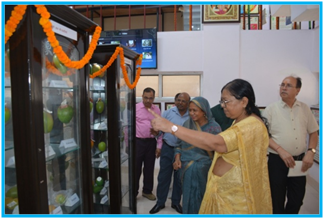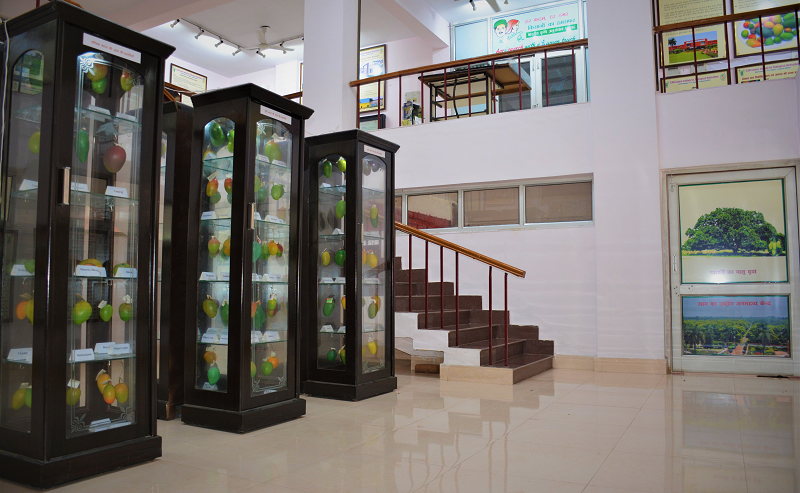About Us
Facilities
Downloads
For Farmers
Publications
ICAR-CISH MUSEUM
The ICAR-CISH museum was opened for the public on the 39th foundation day of the institute i.e. June 1, 2022 in the gracious presence of Sh. Dinesh Pratap Singh, Hon’ble Minister of State (Independent Charge) Horticulture, Agricultural Marketing, Agricultural Foreign Trade and Agricultural Exports, Government of Uttar Pradesh and Smt. Jai Devi, BJP Member of Legislative Assembly, Malihabad, Lucknow. As a Chief Guest of the Institute Foundation Day, Hon’ble Minister also addressed the farmers, institute staff and invited guests. Dr Nrelima Garg, Director presided over the inaugural function.
| In ICAR-CISH museum, there are seven major sections. | |
| 1. | The first section deals with historical timeline about establishment of the institute, its mandates, objectives as well as organizational set up. |
| 2. | The second section pertains to crop improvement and biotechnology, where the account of genetic resources of mandate crops, varieties identified in mandate crops, minor fruits and research work done in biotechnology have been depicted. |
| 3. | In third section, technologies developed on crop production system management particularly, high density planting in mango and guava, management of plant canopy architecture, rejuvenation of old orchards, nursery management, crop diversification, nutrient and water management, organic farming, protected cultivation, hydroponics, terrace gardening etc have been displayed. |
| 4. | In fourth section, the activities related to plant protection mainly management of major pest and diseases of mango and guava, technology of biological control, different kinds of insect traps, mushroom cultivation etc have been given. |
| 5. | In fifth section, different types of value added products from mango, guava, aonla, bael and jamun; technology for waste management, packaging and harvesting tools etc were displayed. |
| 6. | The section six deals with out-reach programmes like; farmers first, SCSP, MG-MG etc. In this section, all extension and developmental activities including Regional Station, Malda and KVK, Malda (West Bengal) were also included. |
| 7. | The last seventh but most important section is mango gallery where clay model of most of the important varieties of mango including from north, south, east, west and promising hybrids developed by the ICAR-CISH, Lucknow have been displayed. The photograph of most popular mango variety ‘Dashehari’ which is about 250 year old plant is also a source of attraction. The nutritional value of mango and key characteristics of major mango varieties were also displayed in this section. Besides, models of poly house and green house, growing structures for hydroponics, organic inputs, insect traps, packaging boxes, harvesting tool etc were also displayed. |

